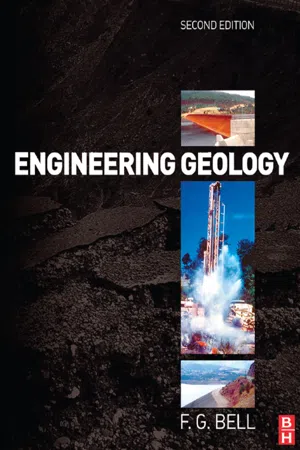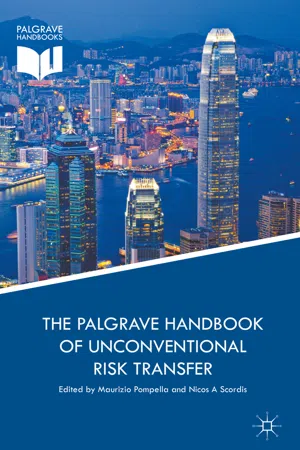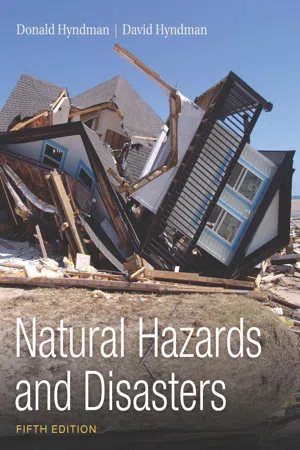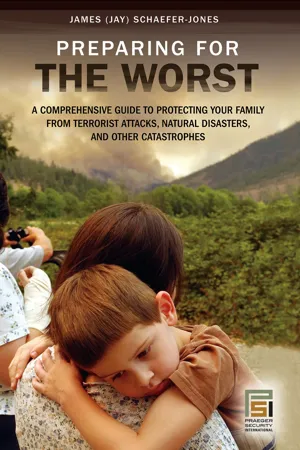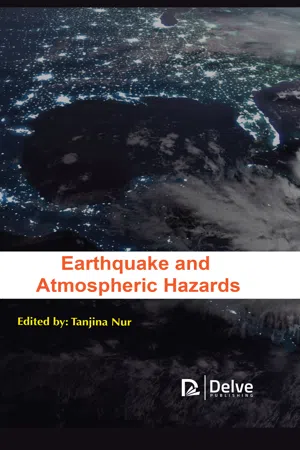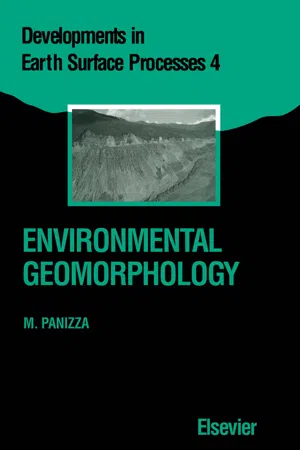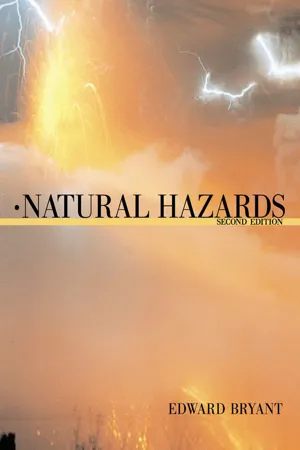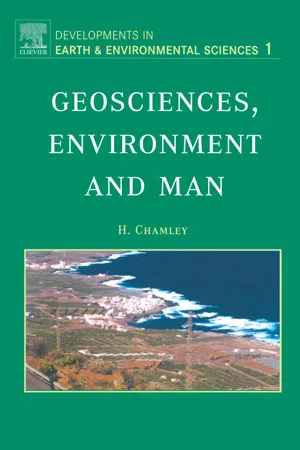Geography
Tectonic Hazards
Tectonic hazards refer to natural disasters caused by movements of the Earth's crust, such as earthquakes, volcanic eruptions, and tsunamis. These events can have devastating impacts on human populations, infrastructure, and the environment. Understanding tectonic hazards is crucial for implementing effective mitigation and preparedness measures to minimize their destructive effects.
Written by Perlego with AI-assistance
Related key terms
1 of 5
10 Key excerpts on "Tectonic Hazards"
- eBook - PDF
- F G Bell(Author)
- 2007(Publication Date)
- Butterworth-Heinemann(Publisher)
Geological hazards can be responsible for devastating large areas of the land surface and so can pose serious constraints on development. However, geological processes such as volcanic eruptions, earthquakes, landslides and floods cause disasters only when they impinge upon people or their activities. Even so, as the global population increases, the significance of geohazards is likely to rise. In terms of financial implications, it has been esti-mated that natural hazards cost the global economy over $50,000 million per year. Two thirds of this sum is accounted for by damage, and the remainder represents the cost of predicting, preventing and mitigating against disasters. Geological hazards vary in their nature and can be complex. One type of hazard, for exam-ple, an earthquake, can be responsible for the generation of others such as liquefaction of sandy or silty soils, landslides or tsunamis. Certain hazards such as earthquakes and land-slides are rapid onset hazards and so give rise to sudden impacts. Others such as soil erosion and subsidence due to the abstraction of groundwater may take place gradually over an appreciable period of time. Furthermore, the effects of natural geohazards may be difficult to separate from those attributable to human influence. In fact, modification of nature by humans often increases the frequency and severity of natural geohazards, and, at the same time, these increase the threats to human occupancy. The development of planning policies for dealing with geohazards requires an assessment of the severity, extent and frequency of the geohazard in order to evaluate the degree of risk. The elements at risk are life, property, possessions and the environment. Risk involves quan-tification of the probability that a hazard will be harmful, and the tolerable degree of risk depends on what is being risked, life being much more important than property. - Maurizio Pompella, Nicos A Scordis, Maurizio Pompella, Nicos A Scordis(Authors)
- 2017(Publication Date)
- Palgrave Macmillan(Publisher)
Part III Risks by Class 189 © The Author(s) 2017 M. Pompella, N.A. Scordis (eds.), The Palgrave Handbook of Unconventional Risk Transfer, DOI 10.1007/978-3-319-59297-8_7 7 Natural Hazards Joanna Faure Walker 7.1 Introduction This chapter explains the basic physical sciences of key natural hazards. It states how the different hazards are defined and categorised, where and when the hazards occur and what secondary hazards are associated with the pri- mary hazard. The chapter provides a brief overview of what is known and unknown and discusses some of the current uncertainties related to modelling the frequency and severity of events. It further introduces some of the physical and social vulnerabilities associated with these perils and potential mitiga- tion techniques. Hazards covered include geophysical hazards (earthquake, volcano, and landslides), hydro-meteorological hazards (tropical cyclones, tornadoes, tsunami, flood) and extraterrestrial hazards (impactors and space weather). 7.2 Earthquakes Earthquakes result from the sudden release of stress along a fault that has built up during the interseismic period (time between earthquakes). Earthquakes are ultimately caused by plate tectonics. Plate boundaries are sites of the relative movement of lithospheric plates around the Earth that separate the J. Faure Walker (*) University College London, London, UK 190 relatively stable plates. Along oceanic plate boundaries, plates move relative to each other along narrow bands of deformation (10–100 km) which are char- acterised by seismic activity (earthquakes) and, in many settings, volcanism. Plate boundaries between two continental plates can be more diffuse, with faulting and earthquakes occurring over wider geographical zones. Therefore, in the continental plates the relative motions of the crust can be more com- plicated to describe than simple rotations about Euler poles as can be done for oceanic crust.- No longer available |Learn more
- Donald Hyndman, David Hyndman(Authors)
- 2016(Publication Date)
- Cengage Learning EMEA(Publisher)
Donald Hyndman ■ The Himalayas of Nepal mark the collision zone between the Eurasian tectonic plate and the northward- moving plate containing India. 2 Plate Tectonics and Physical Hazards The Big Picture W hy is the Pacific coast of North America so rugged and mountainous, with steep slopes prone to landslides, whereas the Atlantic coast is relatively flat with gently sloping beaches? Why are most active volcanoes and large earth- quakes concentrated near the edge of the Pacific? Why are most tsunamis in the Pacific Ocean rather than the Atlantic? Why do the continents on the edges of the Atlantic Ocean look like they would fit if you were to push them together? The answers to all of these questions and many others lie in the theory known as plate tectonics. We now know that giant blocks of the upper layers of Earth move around, grind sideways, collide, or sink into the hot interior of the planet where they cause melting of rocks and forma- tion of volcanoes. Those collisions between tectonic plates squeeze up high mountain ranges, even as landslides and rivers erode them away. To understand these processes and associated hazards, we need to understand the forces that drive them. Natural hazards of all kinds are ultimately driven by mountains, oceans, coasts, and the weather and climate that they control. 16 Copyright 2017 Cengage Learning. All Rights Reserved. May not be copied, scanned, or duplicated, in whole or in part. Due to electronic rights, some third party content may be suppressed from the eBook and/or eChapter(s). Editorial review has deemed that any suppressed content does not materially affect the overall learning experience. Cengage Learning reserves the right to remove additional content at any time if subsequent rights restrictions require it. Plate Tectonics and Physical Hazards 17 Earth Structure At the center of Earth is its core , surrounded by the thick mantle and covered by the much thinner crust ( FIGURE 2-1). - eBook - PDF
Preparing for the Worst
A Comprehensive Guide to Protecting Your Family from Terrorist Attacks, Natural Disasters, and Other Catastrophes
- James Schaefer Jones(Author)
- 2007(Publication Date)
- Praeger(Publisher)
CHAPTER 4 Natural Hazards This chapter includes information about many types of natural hazards. Natural hazards are natural events that threaten lives, property, and other assets. Often, natural hazards can be predicted. They tend to occur repeat- edly in the same geographical locations because they are related to weather patterns or physical characteristics of an area. Natural hazards such as flood, fire, earthquake, tornado, and windstorms affect thousands of people every year. We need to know what our risks are from natural hazards and take sensible precautions to protect ourselves, our families, and our communities. Use the information contained in this chapter to learn about the hazards that pose a risk to you. Include the pertinent information in your family disas- ter plan. Specific content on each hazard consists of the characteristics of that hazard, terms associated with the hazard, measures that can be taken before- hand to avoid or lessen the impact of these events, and what individuals need to do during and after the event to protect themselves. When you complete this chapter, you will be able to do the following: • Know important terms. • Take protective measures for natural hazards. EARTHQUAKES One of the most frightening and destructive phenomena of nature is a severe earthquake and its terrible aftereffects. An earthquake is a sudden movement 32 Preparing for the Worst of the earth, caused by the abrupt release of strain that has accumulated over a long time. For hundreds of millions of years, the forces of plate tectonics have shaped the earth, as the huge plates that form the earth’s surface slowly move over, under, and past each other. Sometimes, the movement is gradual. At other times, the plates are locked together, unable to release the accumulating energy. When the accumulated energy grows strong enough, the plates break free. If the earthquake occurs in a populated area, it may cause many deaths and injuries and extensive property damage. - Michael K. Lindell, Carla Prater, Ronald W. Perry(Authors)
- 2012(Publication Date)
- Wiley(Publisher)
5.3 Geophysical Hazards The earth has three distinct geological components. ▲ The core consists of molten rock at the center of the earth. ▲ The crust is solid rock and other materials at the earth’s surface that vary in depth from 4 miles under the oceans to 40 miles in the Himalayas. ▲ The mantle is an 1800 mile thick layer between the core and the crust. The earth’s crust is defined by large plates that float on the mantle and move gradually in different directions over time. Tectonic plates diverge, converge, or move laterally past each other. When they diverge, new material is generated from below the earth’s mantle, usually at mid- ocean ridges, that flows at a rate of a few inches per year away from the source. This process produces a gradual expansion of the plate toward an adjoining plate. Thus, one plate converges with another plate and the heavier material (a seafloor) is subducted under lighter material (a continent). In the United States, this process is taking place in the Cascadian Zone along the Pacific coast of Washington, Oregon, and Northern California. Tectonic activity produces move- ment that causes earthquakes and tsunamis. These tectonic processes cause the most important geophysical hazards in the United States—volcanic eruptions and earthquakes. 5.3.1 Volcanic Eruptions Volcanoes are formed when a column of magma (molten rock) rises from the earth’s mantle into a magma chamber and erupts at the surface, where it is called lava. Successive eruptions, deposited in layers of lava or ash, build a mountain. Major eruptions create craters that are gradually replaced in dome-building erup- tions. Cataclysmic eruptions leave only a depression where the mountain once stood. American volcanoes (recently erupted) are located in Alaska (92) and Hawaii (21), and the west coast. Oregon has 22 volcanoes, California has 20, and Washington has 8.- eBook - PDF
Geomorphology and Natural Hazards
Proceedings of the 25th Binghamton Symposium in Geomorphology, Held September 24-25, 1994 at SUNY, Binghamton, USA
- M. Morisawa(Author)
- 2013(Publication Date)
- Elsevier Science(Publisher)
Most hazards texts focus on the social system response to, or anticipation of, natural hazards and disasters and give the physical aspects of hazards limited coverage (e.g. Foster, 1980; Petak and Atkisson, 1982). There is a paucity of coursework aimed at educating non-scientists about the risks posed by the geomorphic environment. In a recent survey of 82 graduate schools of planning in North America, asking about curriculum content associated with natural hazards, only 3 courses were named that had the words *'natural hazards or disaster in the title (Havlick and Dorsey, 1994). One implication of the survey is that most planners (and we assume, other decision-makers in similar sit-uations) rely on on the job training to develop expertise in risk assessment and disaster reduction. This provides us with a challenge - to seek ways of improv-ing paths of communication with risk managers. This involves interacting with social scientists involved in hazards research, and publishing results in journals that are likely to be read by people involved in the field of natural hazards. Geomorphologists must familiarize themselves with information produced by social scientists in order to make contributions in the policy arena. Management strategies cannot be based solely on geomorphic prin-ciples, but must be designed with political or economic constraints in mind so that their implementation will occur. A common problem is to propose a strategy based on sound geomorphic theory but with little empirical proof. This strategy is easily refuted in a public forum (Weinberg, 1985; Gares, 1989). We must also examine the human systems in a way that helps account for the influences of human activities on the physical landscape. Humans are an integral part of the landscape and geomorphologists must incorporate human actions into physical landscape models that are used to describe or understand the system (Phillips, 1991; Nordstrom, 1994). - eBook - PDF
- Tanjina Nur(Author)
- 2019(Publication Date)
- Delve Publishing(Publisher)
20 References ............................................................................................... 23 Earthquake and Atmospheric Hazards 2 Naturally occurring physical occurrences, which are either caused by hasty or slow onset events. These events can be hydrological, geophysical, climatological, meteorological, and biological. These include earthquakes, landslides, tsunamis, and volcanic activities, avalanches, and floods, extreme temperatures, drought, and wildfires, cyclones, and storms/wave surges, epidemics, and insect/animal plagues. All of these hazards together with their classification are discussed below in this chapter. This chapter also includes principles of hazard management. 1.1. HAZARDS: MEANING AND CONCEPT Natural or anthropogenic extreme events are defined as the environmental hazards. They are the ones, which go beyond the bearable magnitude within or beyond specific limits of time, make the modifications problematic, leading to disastrous losses of property, income, and lives and become headlines of different news media at international level (Figure 1.1). Figure 1.1: A view of tornado near Anadarko, Oklahoma, Source: https://up-load.wikimedia.org/wikipedia/commons/1/1a/Dszpics1.jpg. Environmental disaster and environmental hazards, both the terms are distinguished in the below given sections. Environmental disasters are defined as the procedure that causes an accident or extreme event or situation of danger. Whereas environmental disaster is explained as a sudden unfavorable extreme event or unfortunate extreme event and it causes excessive damage to human beings as well as plants and animals and other species of earth, i.e., disasters occur quickly, instantaneously, and comprehensively. Thus, environmental hazards are the procedures while environmental disasters are the consequences or responses of environmental hazards. - eBook - PDF
- Mario Panizza, M. Panizza(Authors)
- 1996(Publication Date)
- Elsevier Science(Publisher)
In fact, the factors making up the definition of seismic risk may be summarized according to the outline shown in Fig. 73 (Panizza, 1991). In a strict sense, seismic hazard connected with the earthquake and the seismotec-tonic characteristics of an area, is distinguished from seismic susceptibility; the latter corresponding to a hazard induced by the physicogeographical situation of the area considered. Seismic hazard should refer to the types, features, mechanism, and f / y seismic hazard SEISMIC RISK < seismic susceptibility vulnerability Magnitudo earthquake J focus area dimensions characteristics ] hypocentre ^etc. seismotectonic f seismicity rorj characteristics | tectonic structures j r ^ ^ L ( lithobgy geomorphology hydrogeology etc. exposure economy social organization program plan Fig. 73. Outline witli the factors converging into the definition of seismic risk. 166 phenomenology of earthquakes, that is, to the energy they propagate, to the depth at which they occur, to their recurrence according to time sequences that may even be relatively brief, to the dimensions of the focus area, etc. This type of hazard is also linked to seismotectonic characteristics or, in other words, the relationship between the focus and faults identified on the surface by geological methods or inferred at depth through seismological studies. As far as seismic susceptibility is concerned, the term refers to local, geological, morphological, hydrological and other factors, of both the surface and the substratum, which may amplify or reduce seismic vibrations or create situations of precarious geomorphological equilibrium. The geomorphological studies applicable to seismic risk assessment can be divided into two sectors (Fig. 74): a) morpho-neotectonic investigations conducted to identify active tectonic structures; and b) geomorphological and morphometric analyses aimed at identifying the particular situations that enhance or reduce seismic susceptibility. - eBook - PDF
- Edward Bryant(Author)
- 2005(Publication Date)
- Cambridge University Press(Publisher)
GEOLOGICAL HAZARDS P A R T 2 INTRODUCTION Of all natural hazards, earthquakes and volcanoes release the most energy in the shortest time. In the past 40 years, scientists have realized that the distribution of earthquakes and volcanoes is not random across the Earth’s surface, but tends to follow crustal plate bound-aries. In the past 20 years, research has been dedicated to monitoring these regions of crustal activity with the intention of predicting – several days or months in advance – major and possibly destructive events. At the same time, planetary studies have led to speculation that the clustering of earthquake or volcanic events over time is not random, but tends to be cyclic. This knowledge could lead to prediction of these hazards decades in advance. Before examining these aspects, it is essential to define how earthquake intensity is measured, because earthquakes are always characterized by their magni-tude. This aspect will be examined first, followed by a description of the distribution of earthquakes and volca-noes over the Earth’s surface and some of the common causes of these natural disasters. The chapter concludes with a discussion on the long- and short-term methods for forecasting earthquake and volcano occurrence. SCALES FOR MEASURING EARTHQUAKE INTENSITY (Holmes, 1965; Wood, 1986; Bolt, 1993; National Earthquake Information Center, 2002) Seismic studies were first undertaken as early as 132 AD in China, where crude instruments were made to detect the occurrence and location of earthquakes. It was not until the end of the nineteenth century that these instruments became accurate enough to measure the passage of individual seismic waves as they traveled through, and along, the surface of the Earth. The characteristics of these waves will be described in more detail in the following chapter. The magnitude or intensity of these waves is commonly measured using scales based on either measurements or qualitative assessment. - eBook - PDF
- H. Chamley(Author)
- 2003(Publication Date)
- Elsevier Science(Publisher)
The peak height is proportional to the seismic magnitude. Earthquakes 25 Figure 13: Location of main world seismic regions, of main lithospheric plate frontiers, and of subaerial volcanoes responsible for major historical eruptions (after Bryant, 1991). 26 Geosciences, Environment and Man volcanic eruptions, which also express the ground dynamics along plate frontiers. Some violent earthquakes may also affect the active fault zones of intraplate domains, as, for example, in northeast China, west-central USA and northwest Europe. Damage Earthquakes constitute the natural hazard responsible for the greatest number of deaths and material loss . The two earthquakes that struck north Turkey in 1999 are not representative of the average damage caused by major seismic shakes. For instance the 1976 earthquake of Tangshan in north China caused the death of about 750,000 people and that of Tokyo–Yokohama in 1923, 143,000 victims. The total number of deaths during the last 2,000 years is estimated to be 8 million. Considering the considerable error calculation of such estimation because of insufficiently reliable archives, the actual number of casualties could be double. The effect of seismic tremors is often amplified by fires caused by short-circuits or spilled fuel, and by broken pipes causing flooding or water shortage for the fire fighters. This is particularly the case in densely urbanized areas. Ninety percent of the damage to buildings after the 1923 Tokyo–Yokohama earthquake was caused by fire following the tremors. Geographic distribution The high proportion of tectonic zones marked by converging plate boundaries in South-east Asia and West Pacific regions (Fig. 13) causes high numbers of deaths and important damage. This wide domain includes some of the most populated and helpless world countries, which aggravates the quake consequences (Table 2).
Index pages curate the most relevant extracts from our library of academic textbooks. They’ve been created using an in-house natural language model (NLM), each adding context and meaning to key research topics.
